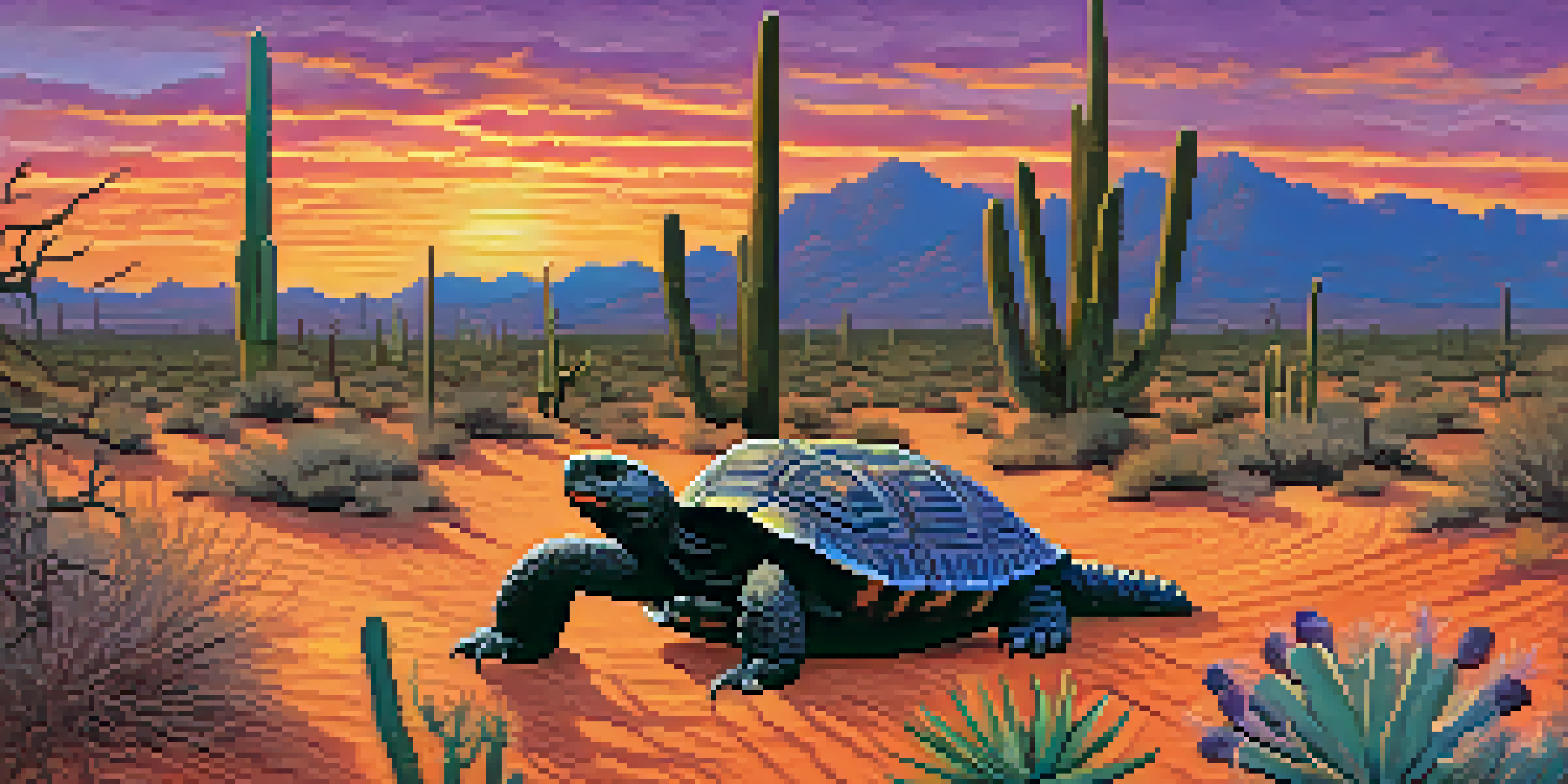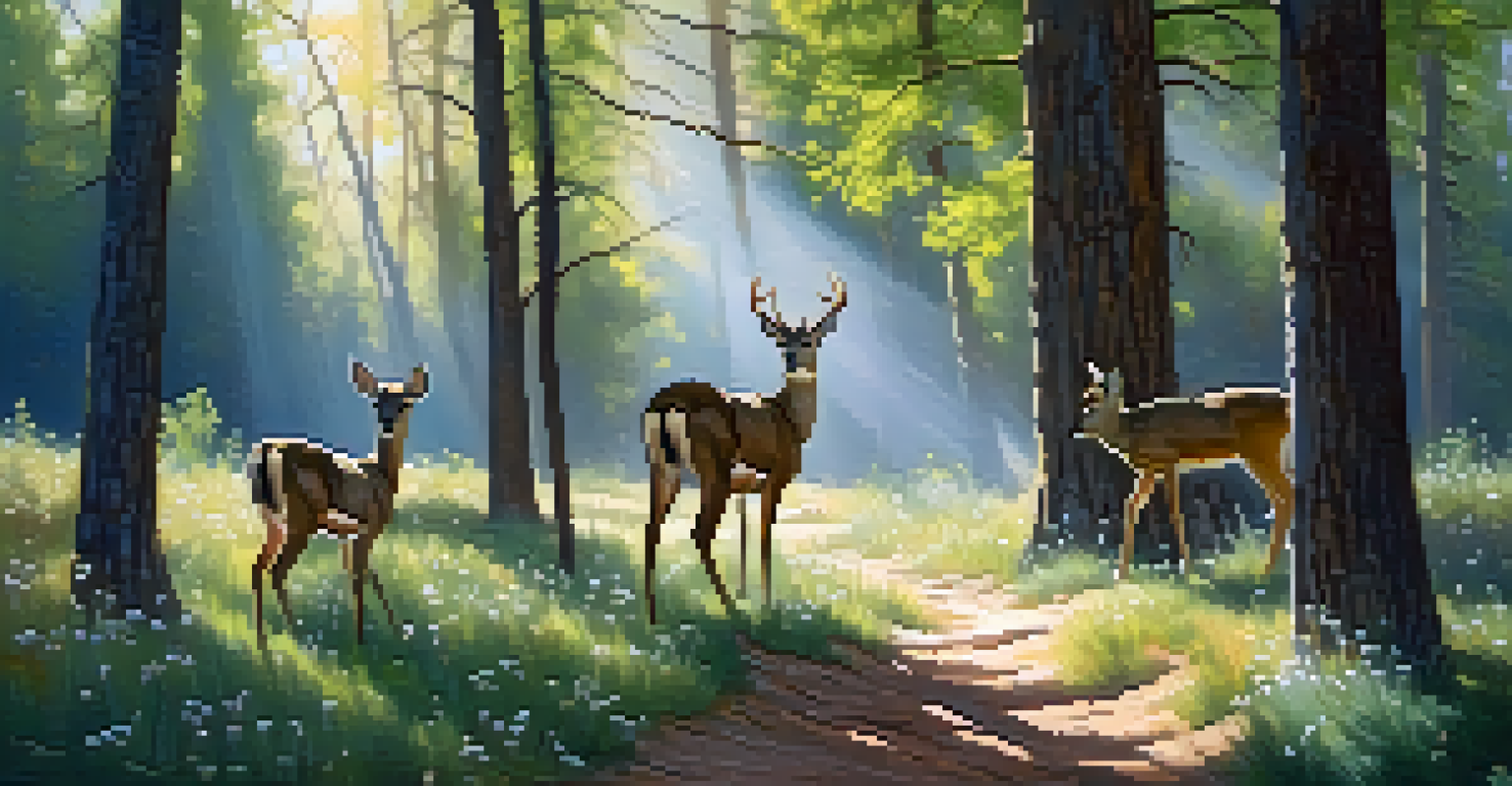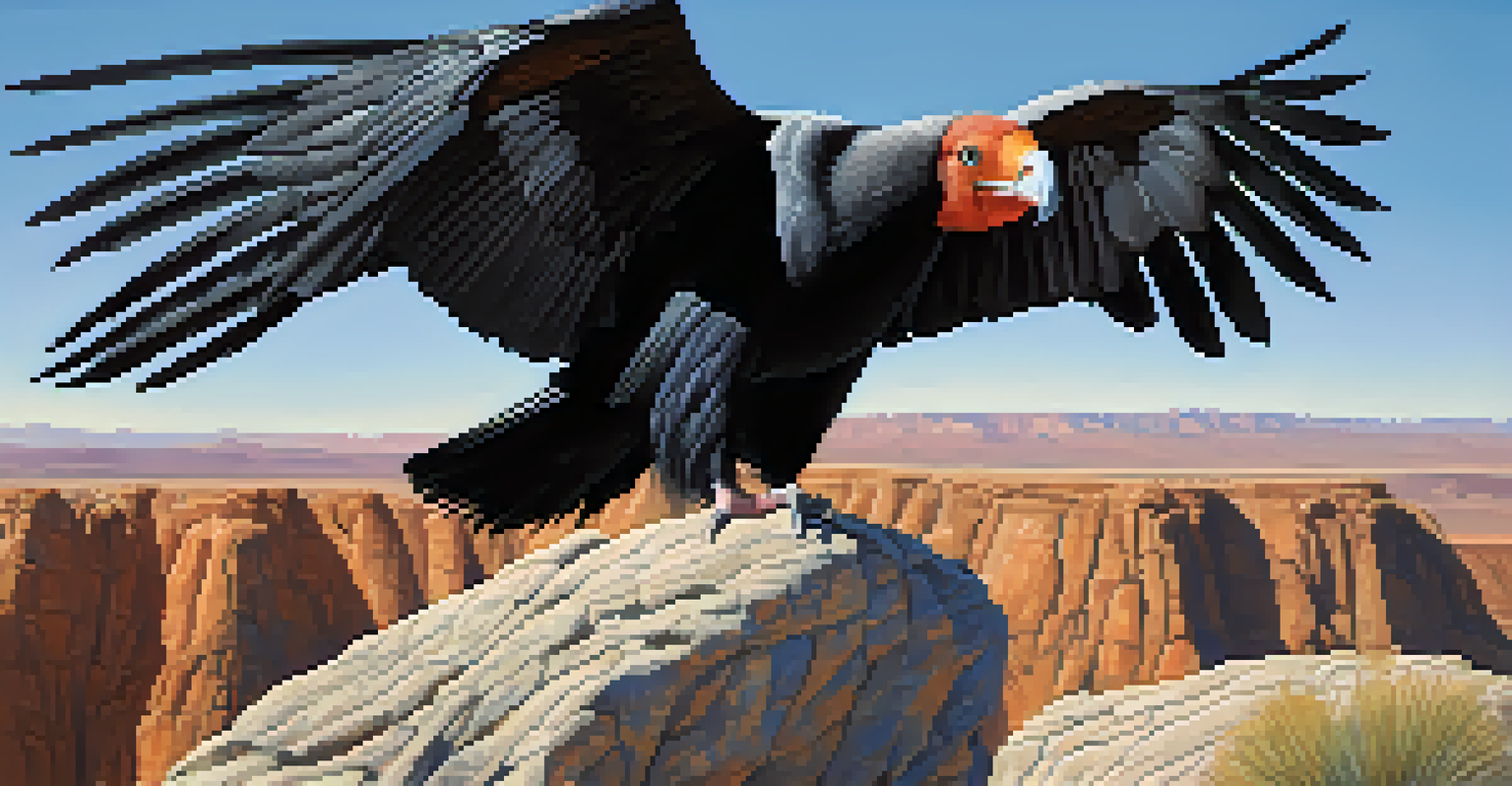The Effects of Drought on Arizona's Wildlife Populations

Understanding Arizona's Unique Ecosystems
Arizona is home to a variety of ecosystems, from deserts to forests, each supporting unique wildlife. The Sonoran Desert, for instance, hosts species like the desert tortoise and Gila monster. These ecosystems have adapted to the region's climate, but they are becoming increasingly vulnerable due to prolonged droughts.
In every walk with nature one receives far more than he seeks.
Wildlife in Arizona relies heavily on seasonal rainfall for survival. Plants and animals have developed intricate relationships; for example, many birds depend on flowering plants for food and nesting materials. When drought strikes, it disrupts these relationships, leading to unforeseen consequences for animal populations.
Understanding these ecosystems is crucial for conservation efforts. With a changing climate, we must recognize how interdependent these species are and the potential ripple effects that drought can create. Protecting one species often means safeguarding its habitat and the entire community it supports.
Direct Effects of Drought on Wildlife
Drought has a direct impact on wildlife by reducing the availability of water sources. Animals such as deer and elk depend on reliable water supplies for hydration, especially during the scorching summer months. When these sources dry up, they are forced to travel further, increasing stress and competition among them.

Additionally, drought affects food availability. Many plants may not survive extended dry periods, leading to less forage for herbivores. This, in turn, impacts predators who rely on these herbivores for sustenance, creating a knock-on effect throughout the food chain.
Drought Threatens Wildlife Survival
Prolonged drought reduces water and food availability, directly impacting wildlife populations and their reproductive success.
The decline in food and water can lead to lower birth rates and increased mortality among wildlife populations. Species that cannot adapt quickly to these changing conditions may see significant drops in their numbers, raising concerns for their long-term survival.
Migration Patterns and Behavior Changes
Many animal species have adapted their migration patterns in response to changing climates, including drought. For instance, birds may leave breeding grounds earlier or arrive later than usual if food and water sources are scarce. This shift can lead to mismatches in timing between species and their food availability.
What we are doing to the forests of the world is but a mirror reflection of what we are doing to ourselves and to one another.
Moreover, drought can cause some species to alter their behavior, such as seeking out new habitats or foraging areas. Animals that typically thrive in specific regions may venture into urban areas in search of water and food, leading to increased human-wildlife interactions.
These behavior changes can create new challenges for both wildlife and humans. Increased encounters can lead to conflicts, affecting community safety and wildlife populations alike. Understanding these shifts is critical for managing interactions and ensuring the resilience of both species.
Impact on Reproductive Success
Drought can significantly impact the reproductive success of many wildlife species. For example, birds often require specific conditions for nesting, including adequate food supply and suitable habitat. If drought conditions persist, these factors can diminish, resulting in fewer fledglings reaching maturity.
In mammals, drought can lead to decreased fertility rates. Stress from limited resources can affect mating behaviors and reduce the likelihood of successful reproduction. This decline in births compounds the effects of drought, leading to long-term population declines.
Endangered Species at Higher Risk
Endangered species in Arizona face increased threats due to drought, habitat loss, and their specialized habitat needs.
The implications of reduced reproductive success are profound. For species already facing threats from habitat loss or other environmental pressures, drought can be a tipping point, pushing them closer to extinction. Conservation efforts must prioritize understanding and mitigating these impacts to help stabilize wildlife populations.
Endangered Species at Greater Risk
Drought poses a particularly significant threat to endangered species in Arizona. Many of these animals, like the California condor and the Sonoran pronghorn, are already struggling due to habitat loss and human interference. With additional stress from drought, their chances of survival diminish even further.
Many endangered species have specialized habitat requirements, making them more vulnerable to changes in their environment. For example, if a specific type of plant that a species relies on for food declines during a drought, it could lead to starvation and decreased populations.
Conservationists are focusing on strategies to protect these vulnerable species from the effects of drought. This might include habitat restoration, creating artificial water sources, or even relocating animals to more hospitable areas. Every effort is crucial to ensure the survival of these at-risk populations.
Human Impact and Wildlife Conservation Efforts
Human activities are a significant factor in the severity of droughts in Arizona. Urban development, agricultural practices, and climate change all contribute to reduced water availability in natural habitats. This not only affects wildlife but also puts additional pressure on human communities.
Conservation efforts play a vital role in mitigating these impacts. Organizations are working to restore natural habitats, implement sustainable water management practices, and educate the public about the importance of biodiversity. By fostering a connection between people and wildlife, we can promote coexistence and stewardship of the environment.
Conservation Efforts are Vital
Effective conservation strategies and community engagement are essential to protect wildlife and mitigate the effects of drought.
Engaging local communities in conservation efforts is crucial. When people understand the challenges faced by wildlife and their ecosystems, they’re more likely to support initiatives aimed at protecting them. Together, we can work towards a more sustainable future that benefits both humans and wildlife.
Looking Ahead: The Future of Arizona's Wildlife
As climate change continues to affect weather patterns, the future of Arizona's wildlife hangs in the balance. Predicting how species will adapt to ongoing drought is complex, but it’s clear that proactive measures are necessary. Conservationists and researchers are working tirelessly to monitor impacts and develop strategies for resilience.
Innovative solutions, such as creating wildlife corridors and preserving critical habitats, are essential for helping species adapt to changing conditions. These efforts not only support wildlife but also promote ecosystem health, benefiting the entire environment.

Ultimately, the future of Arizona's wildlife depends on our collective actions today. By raising awareness, supporting conservation initiatives, and advocating for sustainable practices, we can help safeguard these unique species for generations to come.